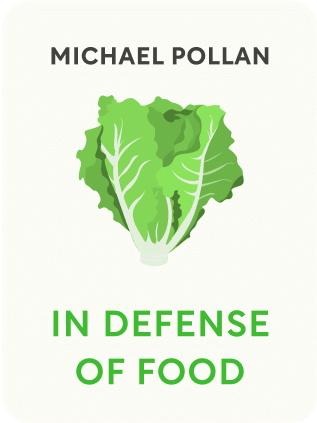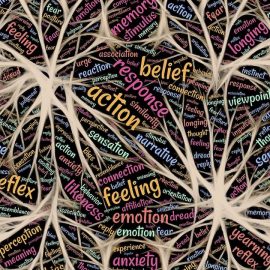

This article is an excerpt from the Shortform book guide to "In Defense of Food" by Michael Pollan. Shortform has the world's best summaries and analyses of books you should be reading.
Like this article? Sign up for a free trial here .
What is the lipid hypothesis? How did the lipid hypothesis change dietary guidelines in the United States? Was there any evidence to corroborate it?
The lipid hypothesis is a medical theory that postulates an association between the intake of saturated fat and the risk of developing cardiovascular disease. This hypothesis motivated the McGovern committee to create the Dietary Goals for the U.S. report which advised Americans to limit their consumption of red meat and dairy even though the evidence was weak.
Keep reading to learn about the health implications of the lipid hypothesis.
The Rise of the Lipid Hypothesis
How did the lipid hypothesis emerge? In the 1960s, the government sought answers to the growing health crisis in America, including the increase of killer diseases and malnutrition. The Senate Select Committee on Nutrition and Human Needs was formed to research the relationship between food and health. At the head of the committee was South Dakota Senator George McGovern. For several years, scientists studied food consumption and health in America and discovered some interesting patterns.
- During World War II, meat and dairy were strictly rationed, and rates of heart disease were reduced.
- After the war, when rationing was no longer required, coronary heart disease skyrocketed in America.
- Other cultures who maintained a plant-based diet after the war did not experience the same results.
These findings created the “lipid hypothesis,” which stated that fat and cholesterol, mostly from meat and dairy, led to increased rates of heart disease. This hypothesis motivated the committee to create the Dietary Goals for the U.S. guidelines in 1977. This report advised Americans to reduce their consumption of red meat and dairy. It did not exist for very long.
The meat and dairy industries strongly criticized the committee’s findings, including cattle ranchers in South Dakota—Senator McGovern’s constituents. As a result, a retraction was printed that changed the advice from “eat less red meat and dairy” to “choose meat and dairy that reduce saturated fats.” With this change, a domino effect occurred in the industrial, political, and social spheres.
- The focus was taken from the problematic food and put on a problematic nutrient.
- If the actual food was not responsible for negative health, then the powerful meat and dairy industries were not, either.
- McGovern was voted out of office by food-industry lobbyists, which sent a powerful message to other government entities who might broach the topic again.
- The concept of “eating less” was erased from nutritional guidelines forever.
Health Implications
With so much emphasis put on nutrients for health, you’d expect to see the healthiest population in the world. This expectation suggests that the science and policies surrounding food are sound and unquestionable, which has rarely been true. In fact, the most significant nutritionism movement of the last 30 years is based on conjecture and contributed to the current health epidemic—the lipid hypothesis.
- As a reminder, the lipid hypothesis states that fat and cholesterol, mostly from meat and dairy, lead to increased rates of heart disease. The evidence came from assumptions made about health and eating habits surrounding WWII. Scientists believed that meat and dairy rationing during the war related to low rates of heart disease. Likewise, rising rates after the war were linked to Americans resuming normal eating habits. This claim was supported by evidence of the low rates of CHD in other cultures that ate mostly plant-based diets.
The advent of the lipid hypothesis severely altered the way we thought about what to eat and how to eat it. These behaviors diminished the culture surrounding food and the overall health of the population.
The Evidence, or A Lack Thereof
The research used to support the bye-in of the lipid hypothesis was small to none. In fact, only a few studies ever found a positive correlation between saturated fats and cholesterol and coronary heart disease (CHD). A number of recent efforts have attempted to debunk the low-fat movement by questioning the validity of the research that led to the hypothesis.
During the period in question, the trend in eating habits was moving toward healthier food choices, but health was trending toward increased CHD. Consumers were actually eating fewer sources of animal fats, such as lard and tallow. Instead, margarine had grown in popularity, outselling butter for the first time in 1957. In general, consumption of animal proteins decreased after the war, from 84 pounds per person to 71 pounds between 1946 and 1976. In this same time period, the use of seed oils doubled.
One explanation for these confounding results may be an oversimplification of the relationship between CHD and meat and dairy during the war. Sugar and gas were also rationed, and eating habits were different. People ate less, in general, and fewer refined carbohydrates during the war. People ate more fish and got more exercise from walking due to a lack of gasoline. Finally, regarding the lower CHD rates in other cultures, it was entirely likely that those cultures had different customs surrounding food, ate fewer calories, and led different lifestyles that included more exercise.
Despite these variables, the finger staunchly pointed at fat as the culprit. A shift in perspective about food swept through the entire population. People turned away from decades of traditional eating habits and toward science-guided standards. What followed was a diminished state of health for the American public.
Fats and Health
The war waged against saturated fats dismissed some key aspects of the role of fat in the body. The brain is mostly fat, which is needed to protect the delicate cells and neurons. Fats are also the foundation of the body’s cellular walls. Different amounts of various fats help the body absorb vitamins and minerals on a cellular level.
But these concerns were not important to the booming food industry, who had much to gain from the lipid hypothesis. Once the hypothesis was embraced, all movement in the food industry became geared toward removing fats from food. Whatever nutrients or ingredients remained, such as refined sugar or high-fructose corn syrup (HFCS), were of little consequence.
What’s interesting is that although Americans reduced their total calories from fat from 42% in 1977 to 34% in 1995, fats were still a major part of the American diet. Saturated fats were removed, and polyunsaturated fat and trans fat took their place. Meat remained a strong staple in the diet. Now, the chunk of beef on the plate was replaced by a chunk of chicken breast with a hefty side of carbohydrates. These actions were justified by the guidelines to “eat more low-fat food.”
With free license to eat as much low-fat food as they wanted, people didn’t change the amount of food they consumed. They ate massive amounts of foods deemed “good” because of the nutrient value. You could now eat a whole box of low-fat cookies and call it healthy eating. Unfortunately, this thinking was based on a lie. As opposed to the lack of evidence linking saturated fat to heart disease, the evidence linking trans fat to heart disease is vast.
Yet, no one in the health or science community has acknowledged or expressed regret for the error. If they did, the American public would know how wrong they were, and people would never trust their guidelines again.

———End of Preview———
Like what you just read? Read the rest of the world's best book summary and analysis of Michael Pollan's "In Defense of Food" at Shortform .
Here's what you'll find in our full In Defense of Food summary :
- Why eating a Western diet is killing you
- How the rise of low-fat foods contributed to the rise of obesity and diabetes
- What to eat if you want to restore a healthy relationship with your food






